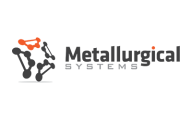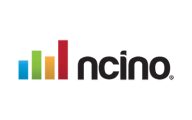TAKE-OUTS FROM THE LATEST GLOBAL CHALLENGER RESEARCH
Last week I attended a webinar by Challenger, entitled Creating The High Conversion Sales Experience.
Challenger’s Marketing Director, Brett Goodyear, shared many rich insights derived from global research that I believe will be highly valuable for B2B technology vendors and partners, as they move through 2020 and plan for growth in 2021.
So here’s the quick lowdown:
The webinar covered the latest market trends, evolving complexities within B2B stakeholder groups and customer buying journeys, and which sales levers to pull to get competitive cut-through and win-deals in a tough climate.
The questions Challenger set out to answer were:
1. How do we keep driving profitable growth?
2. How can we ensure that more of what we do converts?
3. What does that high conversion sales experience look like?
Here’s what they shared…
LATEST MARKET TRENDS
- GDP growth rates are down since 2015 and are landing around 1.6% in 2020 (the Corona Virus is likely to set this tumbling further)
- However, businesses still need to drive growth against this backdrop of market uncertainty and declining demand
- How we do this profitability is the challenge – there’s no blank check, so to do it well requires smarts

WHERE ARE BUSINESSES LOOKING FOR GROWTH?
It will be no surprise to our network of technology clients that suppliers of products and/or services are looking to grow by:
- Increasing new logos
- Increasing win rates
- Increasing existing account penetration
But where it gets interesting is in the backdrop of a declining market – customers either don’t believe they have a need or they don’t want to make an investment at this time, so it’s up to our marketing and sales efforts to create the customer need (in an honest and genuine way).
EVOLVING COMPLEXITIES WITHIN B2B STAKEHOLDER GROUPS AND BUYING JOURNEYS
- Customers are committed to doing their own research so they can define their own problems and solutions. This is a growing trend, with 89% now identifying problems without any supplier input.
- Customers have firm control of their buying experience; they want to learn on their own terms and invite suppliers into the room when they need a price guide, usually defined by their own specs.
- The stakeholder buying committee continues to grow, particularly for bigger and more complex purchases; these on average attract 6 to 11 stakeholders.
- Only 17% of the customer’s whole buying journey is likely to be spent in front of sales reps (usually divided amongst three separate suppliers).
- And in this climate, customers are also highly risk adverse, with 38% resulting in no deal.

SALES LEVERS AND OUTCOMES
So, when our access to the conversation is severely limited, how can we, as marketers and salespeople, change this situation and get some power back in the game?
The latest Challenger research suggests that we can work with the following four levers, but they are not all created equal.
1. Increase activity (more)
2. Increase speed (more)
3. Increase average deal size (more)
4. Improve conversion (quality)

They suggest that whilst all these levers are important in closing a deal, our priority must be to improve the quality and impact by enabling sellers. This is because of the ever-present backdrop of finite resources, budget and defined periods in which targets need to be achieved.
The research then goes into the business case to show that if everything starts to go south, we get less leads, have less meetings and average deal prices fall beneath targets, that there’s still hope by improving conversion rates.

In this situation, the # 1 lever within our grasp is improving conversion – this will deliver the most positive knock-on effects for the business if we get it right.

WHAT DOES THE HIGH CONVERSION SALES EXPERIENCE LOOK LIKE?
The Challenger Research goes into great depth regarding the factors that contribute to a high conversion sales / purchase experience. Done right, this drives significantly more loyalty than all the other factors combined.

PILLARS OF A POSITIVE PURCHASE EXPERIENCE
Pillar 1: Teaching not selling…
This refers to the opportunity to teach customers something they didn’t know about their own business; show them what is causing them pain and negatively impacting on their growth ambitions and targets.
Teaching has been identified as the # 1 contributor to a trusted customer relationship that has more chance of leading to a quality conversation, and ultimately, to conversion.
A teaching-based approach also provides an opportunity to educate, guide and de-risk clients through their own decision-making.
This is done by applying the ‘Challenger Methodology’ which involves identifying 6 to 11 stakeholders and working with them as a group to understand their various needs, perspectives and goals. By doing so, we can help them land on the common or shared interests of the group – this is how we teach in a way that drives real demand.
Through this process, if we can prove that we can deliver genuine value, customers are more likely to keep the conversation going; alternatively, if they don’t see us adding value, the conversation will fall flat, and deals will die.
Our opportunity is to package up our experience and lead the way.

Pillar 2: Seller skills
To teach in a way that achieves the desired results, skilled sales people need to apply just the right mix and amount of pressure and leadership backed by the type of collateral and experiences that will shine a new / different light on their problem and lead them to consider an alternative solution (which in turn leads to the unique products and services we are selling).
The seller needs to hone into the shared need that connects all the different stakeholders, in order to start building rapport and winning support across the committee and eventually into the broader organisation.
As the relationship grows , the ‘teacher’ earns the right to pressure more, proactively identifying their customer’s pain and leading more discussions around how they can best navigate change.
The seller’s skills are really important, because if the customer is only allocating 17% of the whole purchase journey to engaging suppliers, and they have quoted with three suppliers, the one that gets the greatest portion of this time will be the one that can add the most value to the conversation and is most likely to win the business. The flipside is that we lose the deal to a competitor who has a richer conversation, or to inaction as the customer is not convinced of the value we bring.
CREATING THE HIGH CONVERSION SALES EXPERIENCE WRAP
Having good sales processes is not a differentiator; but having a unique perspective and the skills to deliver it, is. Process combined with point of view – is a powerful and scalable opportunity to drive cut-through and have higher quality conversations and win deals.

APPLY CHALLENGER TO YOUR OWN MARKETING
The latest Challenger Research, and its application within the sales environment, coupled with Challenger-led marketing to spark new interest and create demand, is the complete package. It can be effectively leveraged as a way to cost-effectively attract quality net new logos and grow the depth of your existing accounts. Just as importantly, it also provides a consistent narrative across all areas of the business which delivers an easier and more enjoyable purchase experience for B2B customers.
If you’d like to see some case studies that leverage the Challenger Methodology to drive quality leads that convert, or you would like to explore the role Challenger could play in your own marketing and sales activities, please get in touch.

















